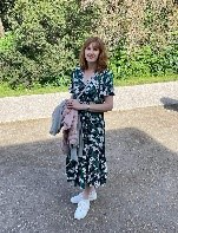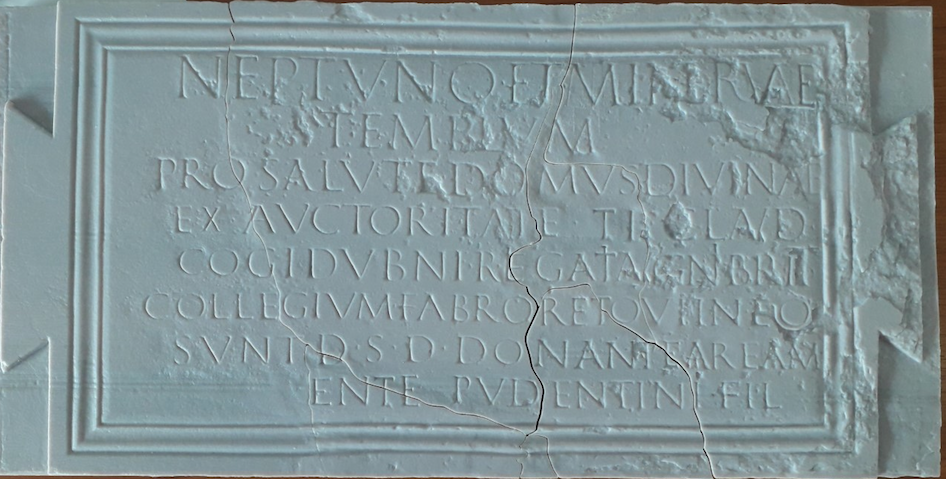WCN Blog 2023/2024 - Emma Spreadbury
Welcome!
Hello! I’m Emma and I’m studying Ancient History and Classical Archaeology here at the University of Warwick.
I am a mature, part-time student, and in this blog I want to take you on a journey, from the beginning of my interest in the ancient world through to what I am studying now and my experience of returning to education.
Where better to begin than with the reason why I became interested in the subject of Classics....
Where did it start?
I studied Latin at a local comprehensive school, during which time I visited the Roman palace at Fishbourne near Chichester. This was back in the 1980s, before the time of mobile phones and the internet, and so I had very little access to anything that would have prepared me for the sight of a partially excavated Roman Palace on the south coast of the UK.
To discover the existence of a world from another time, yet sited within the UK, was almost incomprehensible and left me with a lifelong yearning to find out more. How did the Romans get here in the first place and how did they acquire the skills to create such beautiful art and architecture? The more I learned, the more I wanted to discover and although I didn’t have the opportunity to revisit formal education until 2021, over the intervening years I spent many happy hours visiting various sites in the UK and Europe.
Fishbourne
This mosaic is where it all started and is one of the main reasons why I became fascinated with everything Roman.

Cupid and Dolphin Mosaic at Fishbourne (photo by author)
Through gaining research skills at Warwick, I have been able to find out more about this mosaic and others located across the UK. Take a tour with me, where I’ll share my discoveries so far.
Cupid and Dolphin Mosaic from Fishbourne Roman Palace (image: Wikimedia Commons)
During part of my first year at Warwick, I embarked on the study of material objects and how they assist in telling us more about the Roman Empire.
Applying this learning to the Cupid and Dolphin mosaic helps to give a greater understanding of the messages conveyed within the images. This mosaic is the best preserved and well known of all of the mosaics discovered at Fishbourne. It was first discovered in 1963 by the archaeologist, Barry Cunliffe. Samian ware (a type of Roman pottery) had been used for some of the tesserae and when the mosaic was lifted, the underneath revealed marks on the Samian ware which helped to date the mosaic as circa 160 CE.
Although described as the Cupid and Dolphin, there are elements of this mosaic that suggest it incorporates the theme of Neptune, such as the presence of sea horses and the fact that Cupid holds a trident. Neptune was the Roman version of Poseidon, the Greek god of the sea. Initially, Neptune began as the Roman god of freshwater but evolved to become God of the sea.
The proximity of Fishbourne to the sea serves as an obvious reason for the Neptune theme. It has already been established that the room that the mosaic was found in would have been used as a triclinium. So, why did Romans use such themes in these rooms?
One of the main reasons would have been to have communicated with guests, the fact that the owner was well-educated and knowledgeable of Greek and Roman literature. There would have also been a theme of conviviality, the fact that guests would be welcomed and well-nourished.
(Above) Detail of Cupid and Dolphin from the Prima Porta statue (image: Wikimedia commons)
The use of the Cupid and Dolphin image is equally well known from the Augustus of Prima porta statue (above). Augustus used the image to suggest that he was descended from the gods, demonstrating lineage to the foundings of Rome through the Julio-Claudian family link to Venus, the Roman goddess of love, through Cupid as Venus’ son.
Was the image reinforcing a link between the owner of Fishbourne and the beginnings of Rome? Or was it merely demonstrating his own knowledge of Roman culture?
The other evidence we have of a possible connection to the Neptune theme is of a nearby temple dedicated to both Neptune and Minerva at Chichester. This inscription details the dedication of the temple by Tiberius Claudius Cogidubnus, a first century King of the Regni tribe who is believed by some to have held his royal seat at Fishbourne.
Model of the Cogidubnus Inscription (read more here)
The date of the mosaic makes it impossible for it to have existed at the same time that Cogidubnus was alive. However, was the new owner showing allegiance to the Empire and reinforcing the association of the two civilisations through the imagery on the mosaic?
My studies at Warwick have helped me to understand how the Romans used literature, inscriptions, art and architecture to communicate various messages and to reinforce the benefits of belonging to the Roman Empire through images, symbols and iconography.




